Cracked Teeth
Cracked teeth take on many forms and cause a wide range of symptoms. Sometimes, cracks can result in the need for a crown, root canal treatment, or extraction. At Apex Endodontics, we specialize in determining the extent of cracks and the best possible treatment for your teeth.
What Are Signs that You Have a Cracked Tooth?
While some cracks will appear in visible locations on the teeth, some happen where you cannot see them. Consequently, you should make an appointment for an evaluation for a possible tooth crack if you suffer from any of the following symptoms:
- Extra sensitivity to extreme temperatures
- Pain when biting or releasing bite pressure
- Pain that comes and goes
- Gum swelling
You will likely need an examination and 3D x-rays (CBCT) to help the endodontist determine the crack’s location and extent in your tooth. This imaging will also help the doctor plan the best treatment based on the type of crack you have.
What Types of Cracks Can Teeth Have?
There are many ways teeth can have cracks in them. The type of crack and its extent will determine the type of treatment you receive from your endodontist.
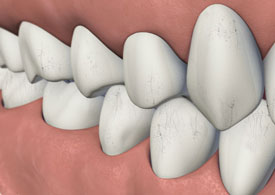
CRAZE LINES
Craze lines are superficial indentations in the surfaces of teeth. Most often, these appear with age. However, they usually do not require treatment unless there is a cosmetic concern.
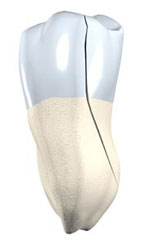
SPLIT TOOTH
Over time, untreated tooth cracks can worsen until they split the tooth into pieces. In these cases, an endodontist might save a portion of the tooth, but you will likely need to have the tooth extracted. Because a split tooth often results in tooth removal, you should have all minor cracks examined to prevent teeth from completely splitting.
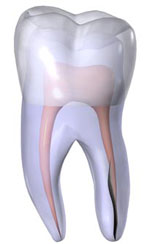
VERTICAL ROOT FRACTURE
Vertical root fractures originate on the root surface. Often, these cracks form and spread under the gumline. In some instances, an endodontist might save part of the tooth, but this type of fracture often requires extraction.
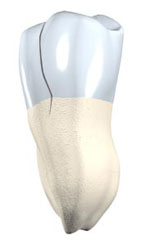
CRACKED TOOTH
The most common type of crack in a tooth occurs when you have a crack from the biting surface that extends to the gumline but not below it. If the crack goes below the gumline, as can happen if you leave a smaller crack untreated, you may lose the tooth. In cases when the crack only affects the portion of the tooth above the gum, the tooth can usually be saved with the treatment provided by your general dentist and/or an endodontist.
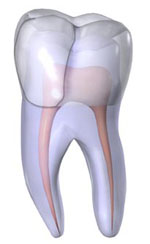
FRACTURED CUSP
Weakness in the biting surface of a tooth may cause a cusp to fracture. When this type of fracture does not expose the root canal, you likely will only need a dental crown to address the issue and protect the tooth.
How Does an Endodontist Treat a Cracked Tooth?
When cracks form in teeth, bacteria can invade the crack and damage the pulp. This condition often requires root canal therapy to remove the infected pulp and preserve the tooth's health. Make sure to follow up with your dentist after this treatment to have a crown added to the tooth to keep the crack from growing.
In instances of a vertical fracture or split tooth, you may need endodontic surgery or extraction. Talk to your endodontist for treatment options to meet your needs.
Call Us at Apex Endodontics for Treatment of Cracked Teeth with Comfort, Precision, and Technology
Never delay treatment for a cracked tooth in order to prevent the crack from worsening. With our specialized equipment and doctors' skills, we provide our patients with comfort, precision, and technology. Contact us at Apex Endodontics online or by phone.
